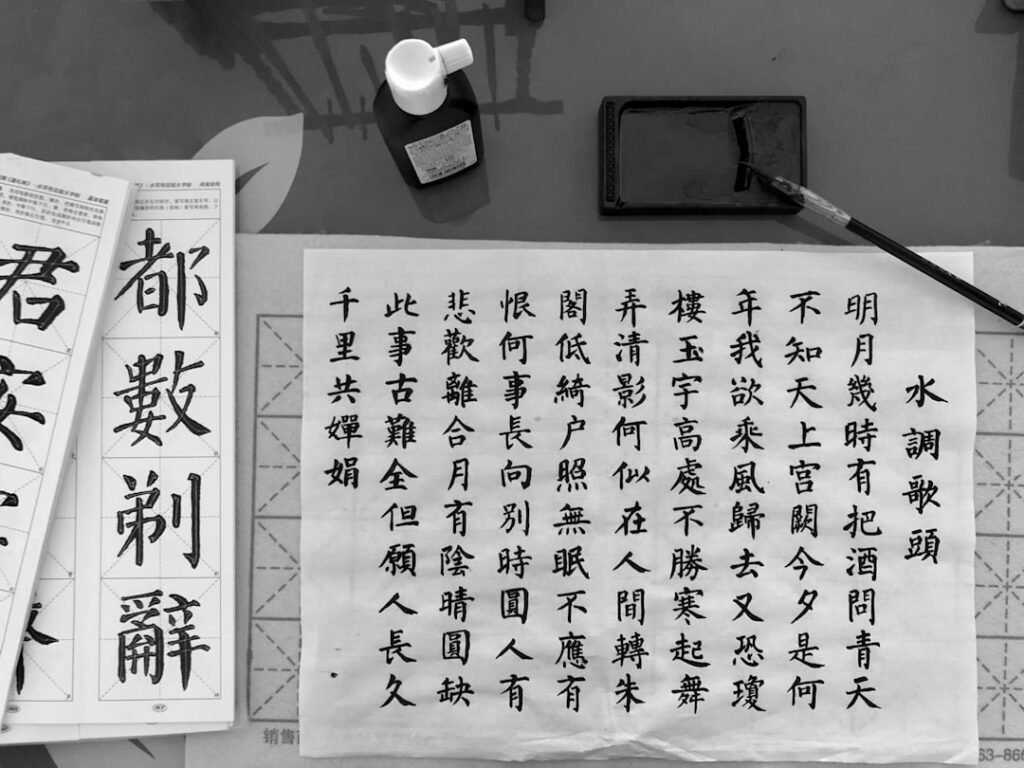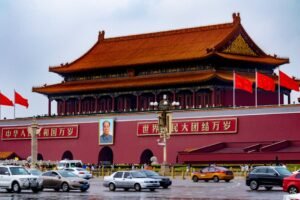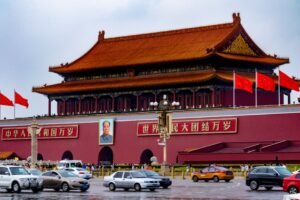The Spring Festival, known as the Lunar New Year, is a time of joy, reunion, and renewal in Chinese culture. One of the most cherished traditions associated with this festive period is the writing and displaying of Spring Festival couplets, or “Chunlian.” These couplets, typically composed of two lines of poetry, are affixed to doorways and walls, serving both decorative and symbolic purposes. They encapsulate the hopes and aspirations of families for the coming year, often expressing wishes for prosperity, happiness, and good fortune.
As the Spring Festival approaches, the vibrant red of the couplets becomes a familiar sight in homes and public spaces alike. The colour red is emblematic of good luck and is believed to ward off evil spirits. The act of writing these couplets is not merely a task; it is an art form that combines creativity with cultural significance.
Each couplet is a reflection of personal sentiment and collective tradition, making them an integral part of the festive atmosphere. Master the art of Chinese calligraphy. Enroll now at the LC Chinese School in Oslo.
Table of Contents
ToggleSummary
- Spring Festival Couplets are a traditional Chinese custom used to decorate homes during the Chinese New Year.
- The history of Spring Festival Couplets dates back to the Han Dynasty and holds great significance in Chinese culture.
- Writing Spring Festival Couplets requires red paper, ink, and a brush, and traditional themes and phrases are often used.
- Techniques for writing Spring Festival Couplets include paying attention to rhythm, tone, and structure.
- Calligraphy and brushwork are important aspects of creating beautiful Spring Festival Couplets.
History and Significance of Spring Festival Couplets
The origins of Spring Festival couplets can be traced back to ancient China, where they were initially known as “Tao Hua” or peach blossom charms. These charms were believed to protect against malevolent forces and were often inscribed with auspicious phrases. Over time, this practice evolved into the more refined art of couplet writing that we recognise today.
The first recorded use of couplets during the Spring Festival dates back to the Tang Dynasty (618-907 AD), when they began to be used as a means of expressing good wishes for the new year. The significance of Spring Festival couplets extends beyond mere decoration; they embody the essence of Chinese cultural values. Each couplet is a poetic expression that reflects the hopes and dreams of individuals and families.
They serve as a reminder of the importance of family unity, prosperity, and harmony in life. As such, they play a vital role in fostering a sense of community and continuity within Chinese society.
Materials and Tools for Writing Spring Festival Couplets
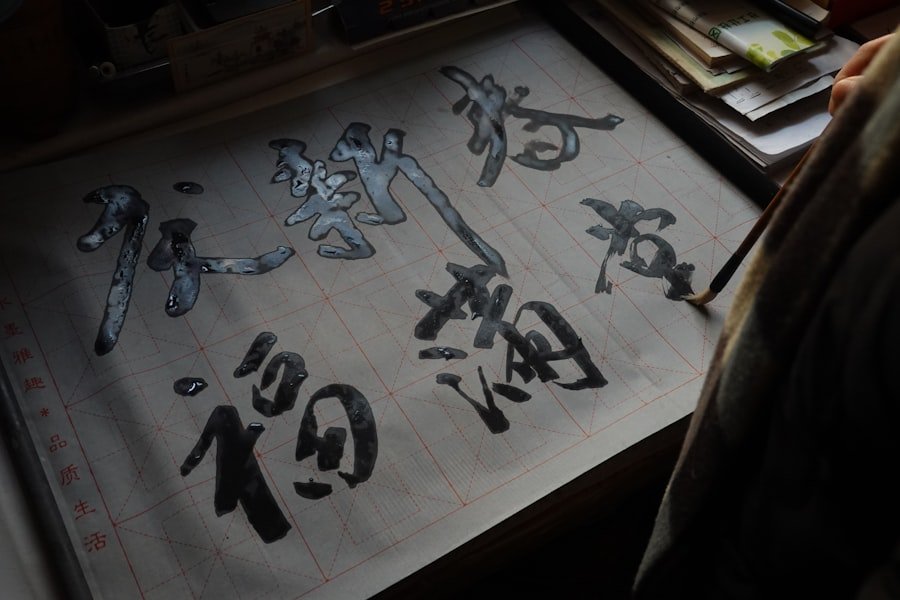
To create beautiful Spring Festival couplets, one must be equipped with the right materials and tools. The primary medium for writing these couplets is rice paper, known for its smooth texture and ability to absorb ink effectively. This type of paper allows for the fluid brush strokes that are characteristic of Chinese calligraphy.
Additionally, red paper is often used to enhance the auspiciousness of the couplets, as red is associated with good fortune. The tools required for writing include a brush, ink, and an ink stone. The brush is essential for achieving the desired strokes and characters; it comes in various sizes and shapes to accommodate different styles of calligraphy.
The ink, traditionally made from soot and water, must be ground on an ink stone to achieve the right consistency. This process not only prepares the ink but also serves as a meditative practice for many calligraphers. Together, these materials and tools create a harmonious blend that allows for the expression of artistic intent in each couplet.
Traditional Themes and Phrases for Spring Festival Couplets
Spring Festival couplets often revolve around traditional themes that resonate deeply within Chinese culture. Common motifs include prosperity, happiness, longevity, and harmony. Phrases such as “Jin Yu Man Tang” (金玉满堂), meaning “May your home be filled with gold and jade,” or “Nian Nian You Yu” (年年有余), which translates to “May you have abundance year after year,” are frequently used to convey well-wishes for the new year.
These themes are not only reflective of individual desires but also embody collective aspirations for society as a whole. The use of auspicious phrases in couplets serves to reinforce positive energy and optimism during the Spring Festival. Families often choose phrases that resonate with their personal circumstances or aspirations, making each couplet unique while still adhering to traditional themes.
Techniques for Writing Spring Festival Couplets
Writing Spring Festival couplets requires a combination of skill, technique, and artistic flair. Calligraphy is an intricate art form that demands practice and patience. One fundamental technique involves mastering brush control; this includes understanding how to apply varying pressure to create thick and thin strokes.
The balance between these strokes is crucial in achieving the desired aesthetic quality. Another important aspect is the composition of the couplet itself. Traditionally, each line must contain an equal number of characters, creating a sense of symmetry and balance.
The placement of characters within each line also plays a significant role in enhancing visual appeal. Calligraphers often experiment with different styles—such as regular script (Kai Shu) or running script (Xing Shu)—to find the one that best expresses their artistic vision while remaining true to traditional forms.
Calligraphy and Brushwork for Spring Festival Couplets
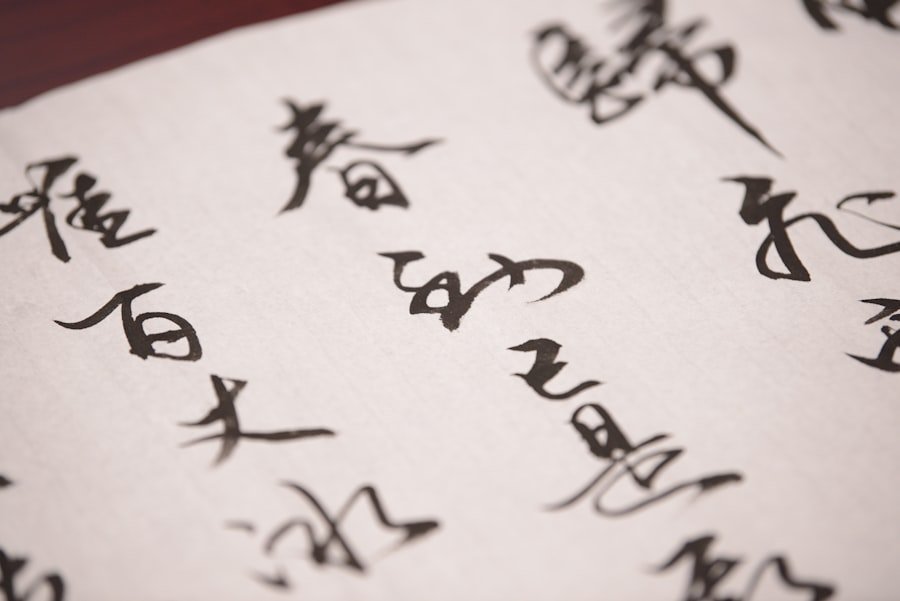
The art of calligraphy is at the heart of creating Spring Festival couplets. It is not merely about writing words; it is about conveying emotion and spirit through brushwork. Each stroke tells a story, reflecting the calligrapher’s mood and intention at that moment.
Mastering calligraphy involves years of practice, as one learns to control the brush with precision and grace. Brushwork techniques vary widely among calligraphers, with some favouring bold strokes that convey strength and confidence, while others may opt for delicate lines that evoke elegance and refinement. The choice of technique can significantly impact how the message is perceived by viewers.
For instance, a couplet written with vigorous strokes may convey a sense of urgency or excitement, while one executed with softer strokes might evoke calmness and serenity.
The Art of Hanging Spring Festival Couplets
Once written, the next step in the tradition of Spring Festival couplets is their display. The art of hanging these couplets is steeped in symbolism and ritual. Typically, they are affixed to doorways or gates, welcoming guests with auspicious messages as they enter a home.
The placement is significant; it is customary to hang them vertically on either side of a doorframe. When hanging couplets, it is essential to ensure that they are positioned correctly—often with the first line facing outward to greet visitors. This practice not only enhances the visual impact but also aligns with cultural beliefs about inviting good fortune into one’s home.
Additionally, many families will hang a horizontal scroll above the door, known as “horizontal scrolls” or “pianzi,” which complements the vertical couplets below.
Regional Variations in Spring Festival Couplets
While Spring Festival couplets share common themes across China, regional variations exist that reflect local customs and dialects. In southern China, for instance, it is common to see couplets written in Cantonese or other local dialects, showcasing linguistic diversity within the tradition. These regional adaptations often incorporate local idioms or proverbs that resonate more deeply with specific communities.
Moreover, different regions may have unique styles of calligraphy that influence how couplets are written. For example, northern styles may favour bolder strokes compared to southern styles that might lean towards more intricate designs. These variations enrich the overall tapestry of Spring Festival couplets, highlighting how cultural practices can evolve while still honouring tradition.
Modern Adaptations of Spring Festival Couplets
In recent years, there has been a noticeable shift in how Spring Festival couplets are created and displayed. With advancements in technology, digital platforms have emerged where individuals can design their own couplets using software applications or online templates. This modern adaptation allows for greater creativity and accessibility but raises questions about authenticity in traditional practices.
Additionally, contemporary artists have begun experimenting with unconventional materials and styles in their couplet creations. Some incorporate mixed media or even graffiti elements into their work, challenging traditional notions while still celebrating the essence of Spring Festival couplets. These modern interpretations reflect a dynamic cultural landscape where tradition meets innovation.
The Role of Spring Festival Couplets in Chinese Culture
Spring Festival couplets hold a significant place within Chinese culture as they encapsulate values such as family unity, hope for prosperity, and respect for tradition. They serve as a bridge between generations—connecting the past with the present—and are often passed down through families as cherished heirlooms. The act of writing and displaying these couplets fosters a sense of belonging and continuity within communities.
Moreover, during the Spring Festival celebrations, these couplets become focal points for gatherings and festivities. They spark conversations among family members about their meanings and significance while also serving as visual reminders of shared aspirations for the new year ahead. In this way, Spring Festival couplets transcend mere decoration; they become integral components of cultural identity.
Tips for Writing and Displaying Spring Festival Couplets
For those interested in embracing this beautiful tradition, there are several tips to consider when writing and displaying Spring Festival couplets. Firstly, take time to select meaningful phrases that resonate with your aspirations for the new year—this personal touch adds depth to your couplet. When writing your couplet, ensure you have a quiet space where you can focus on your brushwork without distractions.
Practising your strokes on scrap paper before committing them to your final piece can help build confidence in your technique. Additionally, consider experimenting with different styles until you find one that feels authentic to you. Finally, when it comes time to display your couplet, pay attention to placement—ensure they are hung securely on either side of your doorway for maximum impact.
Remember that these couplets are not just decorative items; they carry wishes for good fortune into your home. For those looking to delve deeper into this art form, consider enrolling in Chinese calligraphy courses at LC Chinese School in Oslo. These courses offer an excellent opportunity to learn from experienced instructors who can guide you through the intricacies of calligraphy while providing insights into cultural significance behind each stroke.
Engaging in this practice not only enhances your skills but also connects you more profoundly with Chinese traditions during this festive season. In conclusion, Spring Festival couplets are much more than mere decorations; they embody centuries-old traditions that continue to resonate within contemporary society. Through their rich history, artistic expression, and cultural significance, they serve as powerful symbols of hope and renewal during one of China’s most cherished celebrations.
Master the art of Chinese calligraphy. Enroll now at the LC Chinese School in Oslo.

